The Three Sisters and The Time Of The Seventh Fire
This article shares a recipe from my upcoming book, information on the "Three Sisters" companion planting system and a prophecy offered to us by those who are indigenous to Turtle Island
This nutritious and delicious stir-fry shown in the picture above is made using the bountiful harvest which is traditionally grown by many of the indigenous peoples in (what is now called North America) as part of the "Three Sisters" plant guild.
According to Iroquois legend, corn, beans and squash are three inseparable sisters who only grow and thrive together. This tradition of interplanting corn, beans and squash in the same mounds, widespread among the societies of people that are indigenous to Turtle Island, is a sophisticated, regenerative system that provides long-term soil fertility and a healthy diet to generations. Growing a Three Sisters garden is a wonderful way to feel more connected to the history of this land and contribute towards a brighter future, regardless of our ancestry. Early European settlers would certainly never have survived without the gift of the Three Sisters from those who are indigenous to Turtle Island (now called “North America”). In fact, that is the basis of the story behind our Thanksgiving celebration.
Corn, beans and squash also complement each other nutritionally. Corn provides carbohydrates, the dried beans are rich in protein, balancing the lack of necessary amino acids found in corn. Finally, squash yields both vitamins from the fruit and healthful, delicious oil from the seeds.
The addition of wild staghorn sumac and wild rice adds nutrition and rich flavors to the dish. Though unrelated to the 'three sisters cultivation method, they were also among the traditional foods of some of the First Nation peoples of Canada.

For information on how to forage for your own Staghorn Sumac for using in this recipe and others, I wrote an in depth article on that plant here:
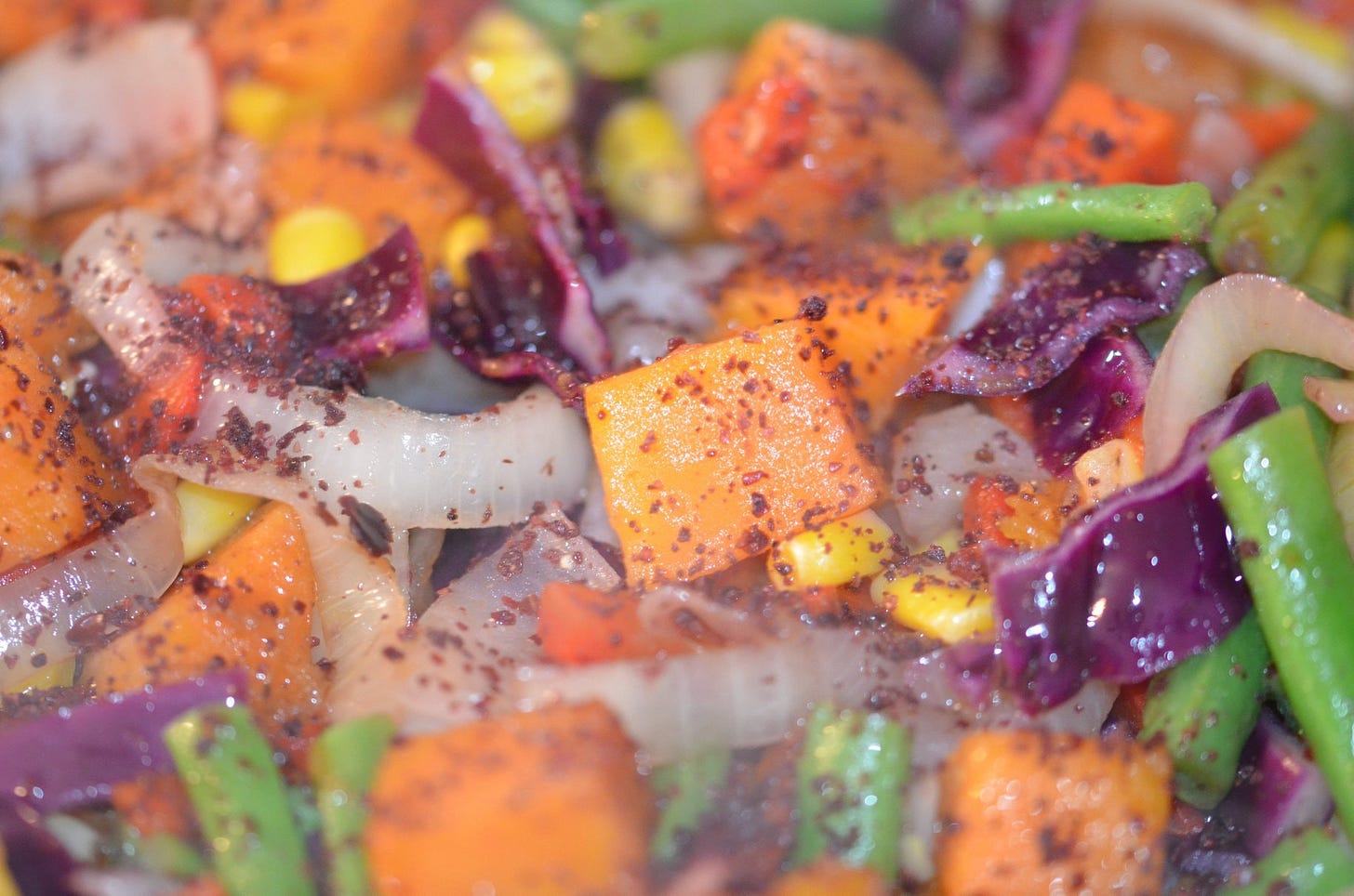
The following is a recipe from Recipes For Reciprocity: The Regenerative Way From Seed To Table called The Three Sisters Sizzler
Ingredients:
- 1-2 cups organic sweet corn kernels (frozen or fresh)
- 1 large red bell pepper, chopped
- half a medium sized butternut squash, cubed
(or other winter squash of your choice)
- 1 large yellow onion, chopped
- 1-2 cups green beans, chopped into bite sized pieces
- 1 cup sliced purple cabbage
- 1 cup cooked wild rice
- 2 cups cooked basmati rice (or other rice of your choice)
- 1-2 tbsp dried sumac berries
- avocado or olive oil for cooking
- black pepper to taste
- a splash of hot sauce
- (optional) throw in some diced heirloom chilis for added sizzle ;)
Directions:
Begin by soaking the rice in water overnight on the counter (or for at least 2 hours before cooking). Pre-roasted your squash so the flesh is almost cooked through but not mushy, cut into cubes and set aside. Drain water and rinse the rice well then cook as directed. While the rice cooks cut up all the vegetables and add some oil to your frying pan (or Wok). Once the ride is cooked, mix together and set aside. Allow the oil to heat until shimmering (add a piece of onion to test if its hot enough to give the ingredients a good sizzle). Add all the veggies, some sumac powder, some hot sauce and black pepper to the pan. Fry on medium high heat until all the ingredients are cooked and edges are starting to brown. Taste and season with more sumac, black pepper and/or hot sauce as needed. Serve the mixture hot over top a bed of rice. Will keep in the fridge for up to one week, freezes well.
Who are The Three Sisters?
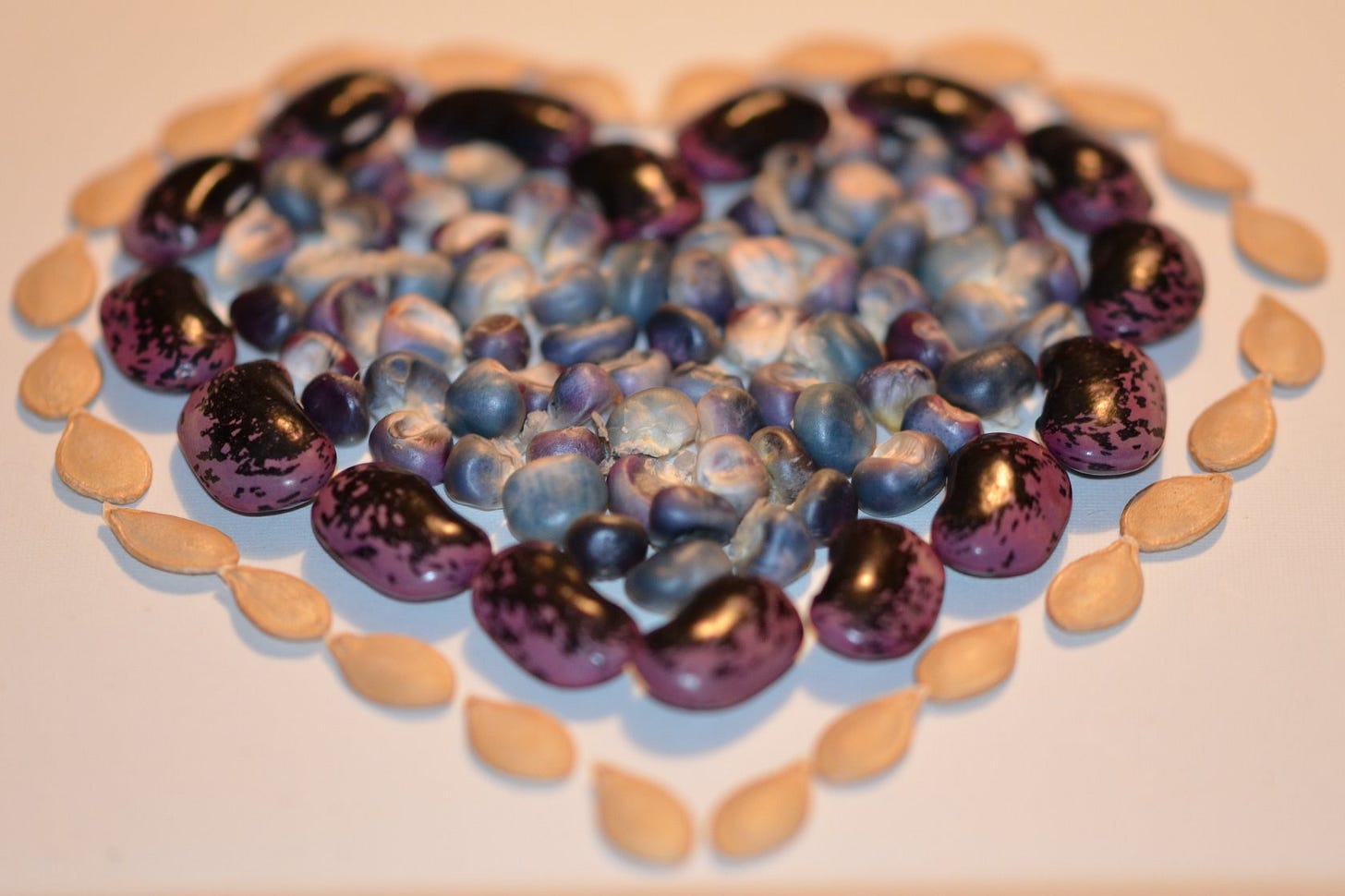
Corn provides a natural pole for bean vines to climb. Beans fix atmospheric nitrogen on their roots (sharing the excess with neighboring plants while growing) and also improving the overall fertility of the plot by providing nitrogen (aka "fertilizer") which is deposited in the soil, pulled in from the air to the following year’s corn. Bean vines also help stabilize the corn plants, making them less vulnerable to blowing over in the wind. Shallow-rooted squash vines become a living mulch, shading emerging weeds and preventing soil moisture from evaporating, thereby improving the overall crops chances of survival in dry years. Spiny squash plants also help discourage predators from approaching the corn and beans. The large amount of crop residue from this planting combination can be incorporated back into the soil at the end of the season, to build up the organic matter and improve its structure.
For centuries these three crops have been the center of many indigenous peoples (of what is now called Canada and the US) culture's agriculture and culinary traditions. It is for good reason as these three crops complement each other in the garden as well as nutritionally.
These three crops are also at the center of culinary traditions and complement one another as well. A diet of corn, beans, and squash is complete and balanced. Corn provides carbohydrates and the dried beans are rich in protein and have amino acids absent from corn. Squash provides different vitamins and minerals than corn and beans. These three crops are also important because they can all be dried and used for food year round. These traits are seen as less important by some today (though I would suggest we would be wise to grow crops that offer these traits) but were very important in the past which lead to their significance as the major cultivated foods.
The tradition of calling these crops the "Three Sisters" originated with the Haudenosaunee, pronounced Ho-deh-no-shaw-nee. Also known as the Iroquois, Haudenosaunee occupy the regions from the St. Laurence River to around the Great Lake in Northeastern United States and Canada. All three types of seeds are planted together in the same mound in the Haudenasaunee planting method. The elevated mound assists with drainage and avoids water logging of the plant roots which is important in this region that receives abundant rainfall in the summer.
In the Southwest, there are traditions of planting the Sisters together as well as in separate fields. In dry farmed areas like Hopi and portions of the Navajo Nation, the Sisters are planted in separate areas of fields with wide plant spacing to maximize limited water. In areas with adequate water the Sisters can be planted together in close proximity to get the companion planting benefits in the same cycle. Regardless of how they are planted, these three crops are some of the most important for Native American peoples of the Southwest in addition to other crops like tobacco, sunflowers, amaranth, and melons.
When and How to Plant :
https://cdn.shopify.com/s/files/1/0157/0808/files/How_to_Grow_a_3_sisters_Garden.pdf?v=1631142579
These crops are warm season plants and do not tolerate frost. Plant seeds for the Three Sisters outside with the spring, summer, or monsoon planting periods. Check with your local planting calendar to determine the best time for your area. One major concern for the Southern Southwest is the hot, dry heat of the early summer. Corn in particular does not tolerate high heat and low humidity during the period of tasseling. Therefore, plant before April 15 to ensure that the pollen released during the corn's tasseling period (30-70 days after planting depending upon variety) will occur before June/early July when it will be more likely to be sterile or infertile. Alternatively plant in mid-late July with the summer monsoon season and the corn will reach maturity when the temperatures drop a little and humidity rises.
I recommend directly planting all of these types of seeds as they will fare better than transplants. Direct planting of seeds leads to stronger root systems that are more adequately able to take up water and nutrients, resulting in more vigorous and healthy plants.
Planting the Three Sisters in the order of corn, beans, and squash will ensure that they will grow and mature together and will not grow at the expense of another Sister. Sister Corn should be planted first so that it can grow tall above the other crops. Plant seeds for Sister Bean 2-3 weeks later, or at least when the corn is a few inches tall. When the beans are sending out tendrils to climb the corn will be tall enough to support them. Plant Sister Squash seeds 1 week later after the beans have emerged. You don't want the large squash leaves to shade out young corn and bean seedlings before they have time to establish.
There are numerous configurations to Three Sisters Gardens. The main consideration is your space constraints. You will want to give individual plants enough space to thrive and have enough of each type of crop to facilitate pollination. Beans are self-pollinating so even only 1 plant will produce beans. They do get crowded growing up corn plants so expect slightly lower yields than if you grew them in their own plot. Squash require insects to pollinate the flowers so having several plants growing at the same time helps attract sufficient pollinators. Corn is wind-pollinated and while capable of self-pollinating you will have more success with more plants. It is best to have at least 10-20 corn plants to provide sufficient pollen availability but plant more if you have the space to increase your success.
For more information on how to plant a Three Sisters style garden patch: https://www.nativeseeds.org/blogs/blog-news/how-to-grow-a-three-sisters-garden
The Other Sisters
For some cultures, other crops are also important in traditional agriculture. For example, tobacco is equally sacred as Sisters Corn, Beans, and Squash for many indigenous cultures of the Southwest. There are some indigenous people's such as the Abenaki which included more than three sisters in their companion planting traditions. According to Amyrose Foll (the founder of the Virginia Free Farm and a member of the Abenaki tribe) "we're so different across the continent. I mean, there's 600 different tribes. And so, we have a base of seven sisters that's skamon, which is corn, adebakwal, which is beans wassawa, which is squash, gizos kogan, which is sunflower, Jerusalem artichokes, which actually don't even have a word. We call them Ojibwe potatoes. The Ojibwe are far west the Anishinaabe. They're west on the other side of the Mohawk. And sister ground cherry, which is kiiadebimen and odamo or wodam, which is tobacco." Crops like Sunflowers, Amaranth and. Sunchokes (or “Jerusalem Artichokes”) are considered other Sisters and so depending on your climate and food preferences these can also be included in your three sisters planting accordingly. They can offer shade to the other Sisters during the heat of the afternoon, attract pollinators, and provide additional stalks for beans to climb. The edible seeds and amaranth greens contribute to a nutritionally balanced diet.
Because they have a similar growing habitat, other cucurbits like watermelon and gourds can be substituted for the squash. The long, sprawling vines will shade the ground in a similar way to squash. I also like to add flowering edible/medicinal plants such as Borage, Cilantro, Clover, Yarrow, Wild Roses, Dill, Tulsi and/or Echinacea around the peremeter of my three sisters plantings to invite in both native pollinators and beneficial predetor insects in greater numbers. Consider growing some of these other crops (and any that are native to the region where you live that could serve similar functions) in place of or in addition to corn, beans, or squash depending upon what you like to eat and enjoy growing as well as depending on what will do best in your local climate.
"The way of the three sisters reminds me of one of the basic teachings of our people. The most important thing each of us can know is our unique gift and how to use it in the world. Individuality is cherished and nurtured, because, in order for the whole to flourish, each of us has to be strong in who we are and carry our gifts with conviction, so they may be shared with others. Being among the sisters provides a visible manifestation of what a community can become when its members understand and share their gifts. In reciprocity, we fill our spirits and our bellies."
- Robin Wall Kimmerer (Author of "Braiding Sweetgrass")
Prophecy Of The Seventh Fire
You can watch a video clip with Robin Wall Kimmerer sharing one interpretation of it here:
In the prophecy her elders spoke of, there would come a time when humans would neglect their sacred connection to the living Earth and we would face a fork in the road. One of the paths is soft and green and the other is charred, jagged and burnt.
The prophecy says that there will come a time when people of all colors and creeds who seek to embark down the green path together must first look back to the teachings and the wisdom of their ancestors, to choose as they did, to nurture a symbiotic relationship with the land and embrace a reverence for the living Earth (which will provide them the guidance they on the path forward).
I believe that in many ways, each of us stands at that fork in the road that the Seventh Fire prophecy describes, right now.

Another form of wisdom offered to us on our quest to choose "the soft and green path" and co-create a future worth living in and gifting to future generations by our brothers and sisters in the Haudenosaunee Confederacy is the Seventh Generation Principle.
The Seventh Generation Principle is an Indigenous Concept, to think of the 7th generation coming after you in your words, work and actions, and to remember the seventh generation who came before you.
This is just one example of a helpful sign post and illuminating candle that those who came before us offer us, which can help us to safely navigate the path ahead. Each of us must look into both the wisdom of our ancient ancestors and our hearts to find the courage to let go of our material addictions, give our time and energy to give back to Mother Earth, and in doing so to chose the soft, green and hopeful path at this fork in the road.
If we learn from our ancestors and our Mother Nature and accept her open hand we can thrive and nurture our bodies in any and all situations (while staying guided by integrity and love).
We can align our wealth and health with the health and wealth of the living Earth and through merging with her regenerative capacity and inherent abundance we can become irrepressible, guided by love and co-create resilient communities with integrity to gift onto future generations.
We are the ones we have been waiting for.



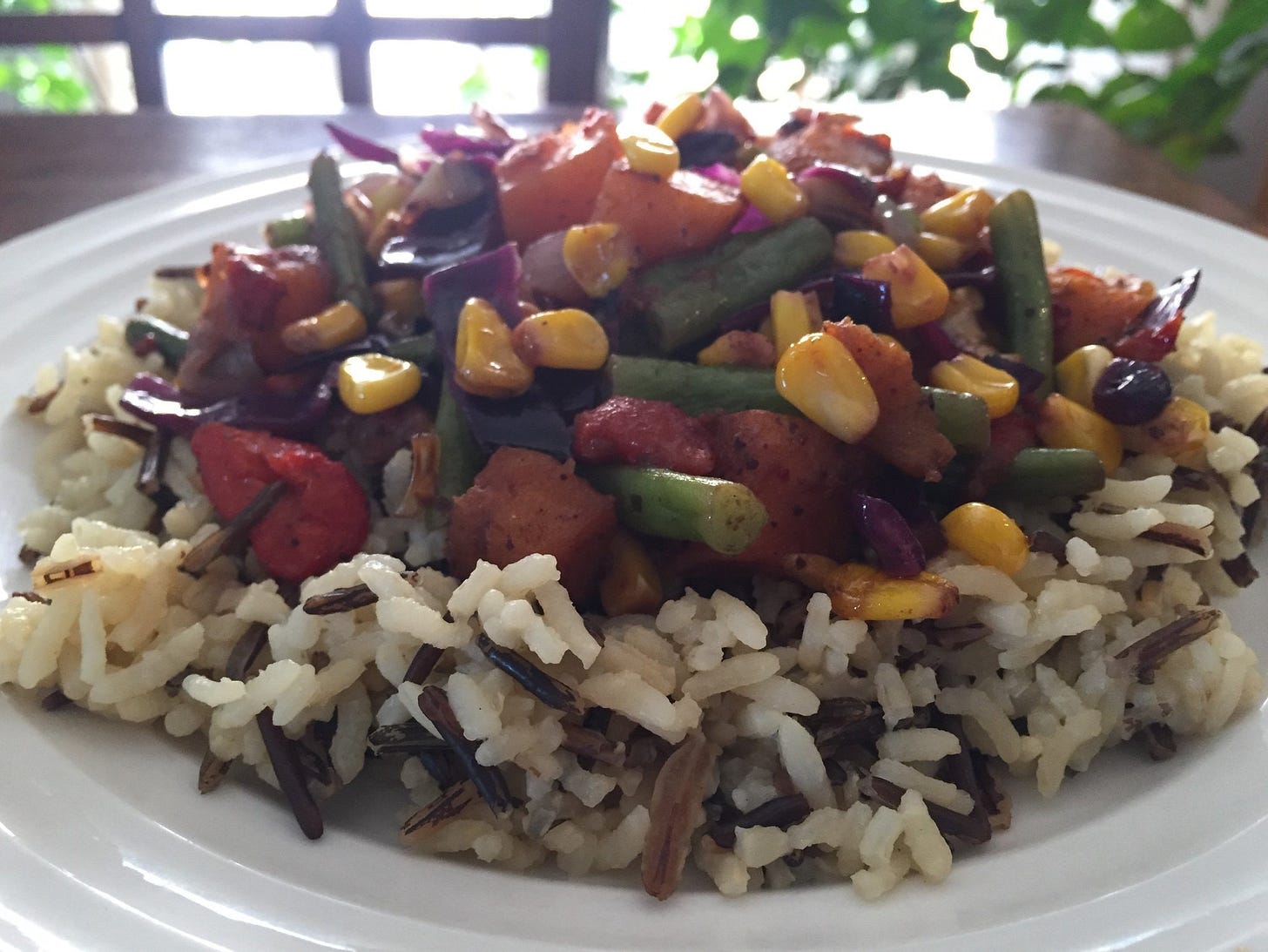
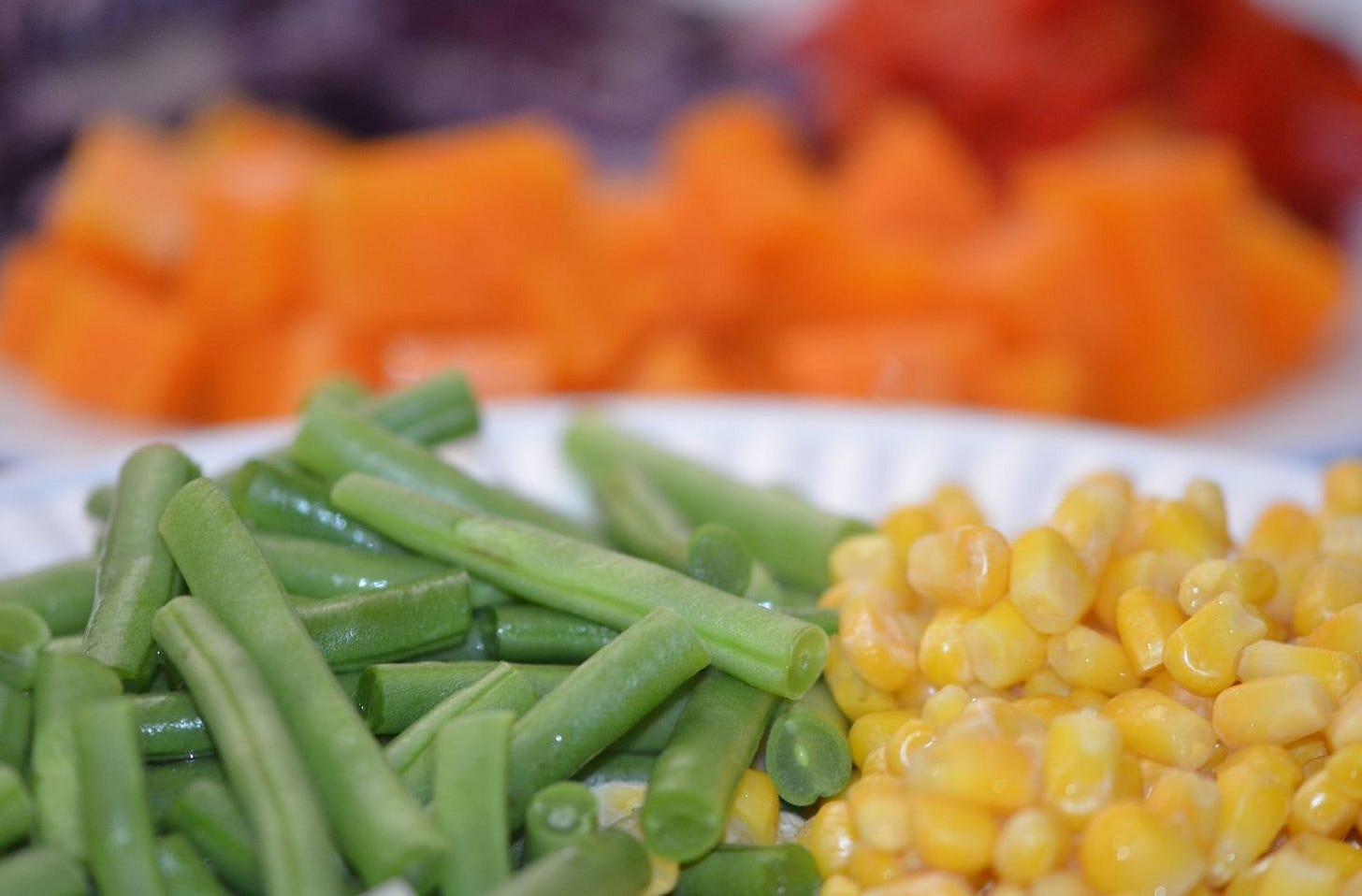
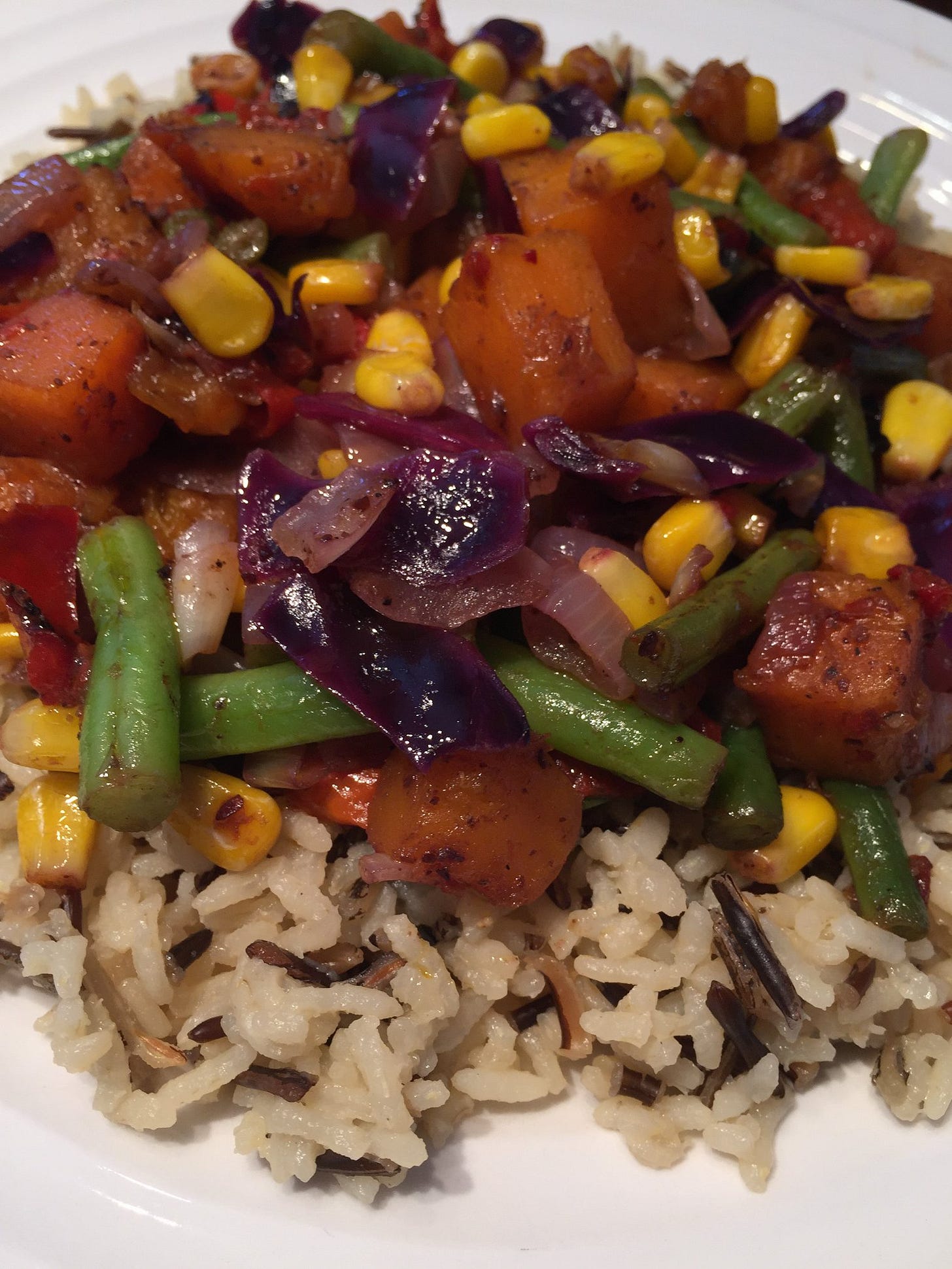
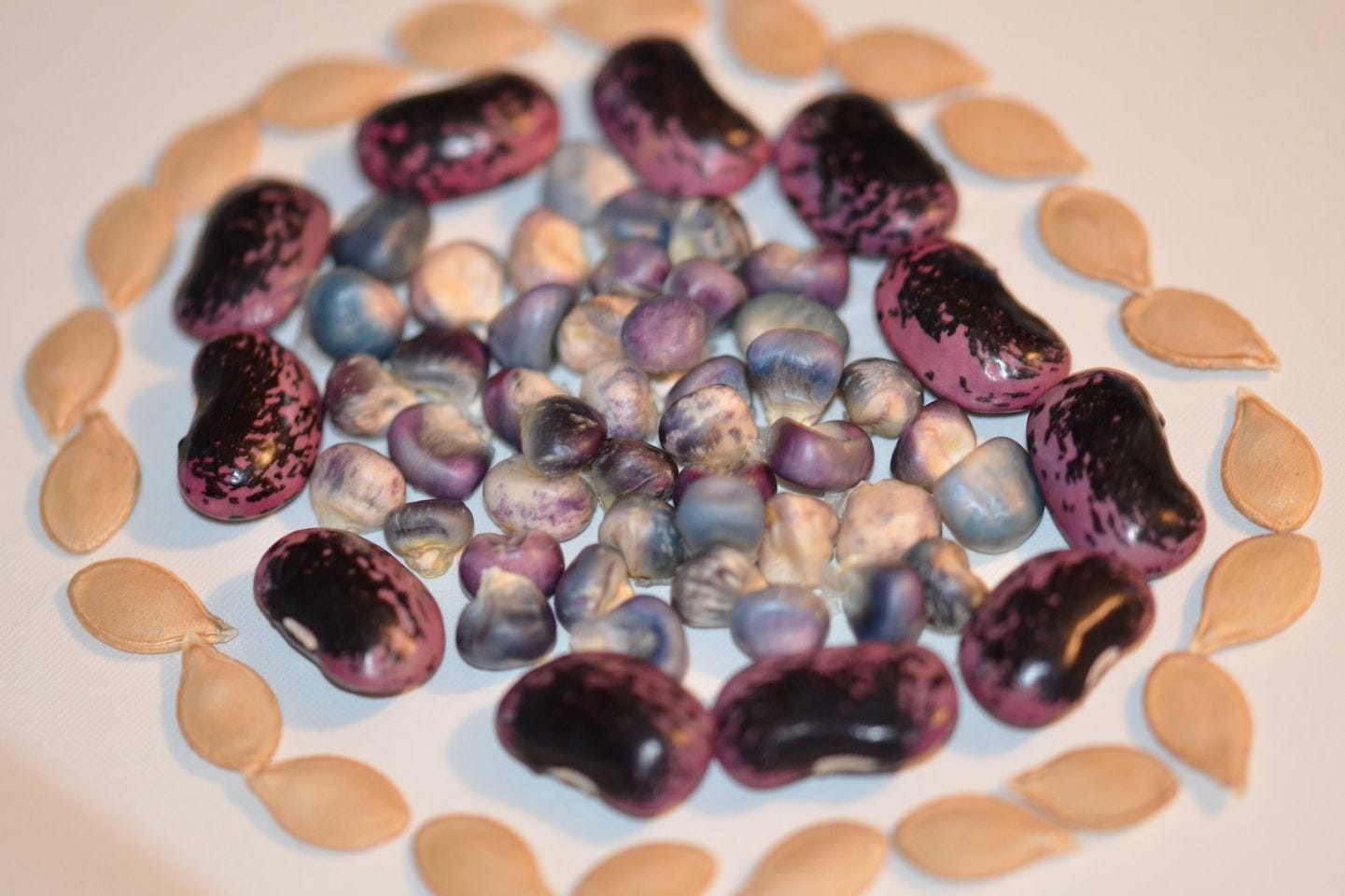


Lovely article. If only I had more land and were younger. The recipes make my mouth water.
Thank you, Gavin. I loved this. The recipe looks delicious and, well, listening to Robin made me cry. I know it's important not to lose hope, and I always say that I dream of drinking from a river again, but it sure is hard some days seeing what is being done to this beautiful planet. xo